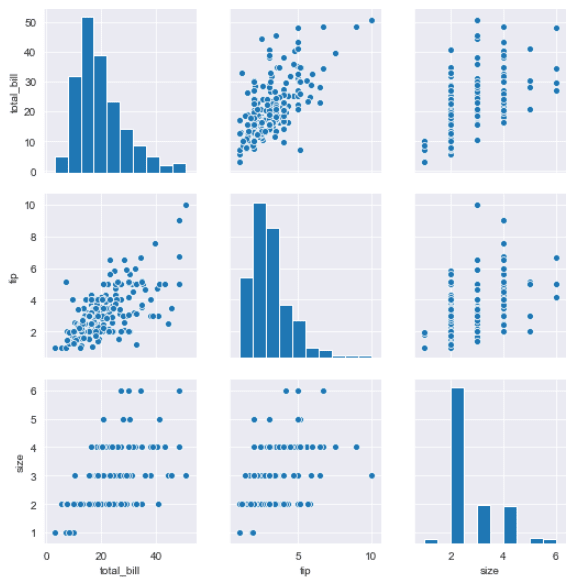
- #Scatter plot python seaborn how to
- #Scatter plot python seaborn install
- #Scatter plot python seaborn full
Each library approaches data visualization differently, so it’s important to understand how Seaborn “thinks about” the problem.
#Scatter plot python seaborn how to
How to Learn Seaborn, the Self-Starter Way: There are some tweaks that still require Matplotlib, and we’ll cover how to do that as well. However, Seaborn is a complement, not a substitute, for Matplotlib. It makes it very easy to “get to know” your data quickly and efficiently. Those last three points are why Seaborn is our tool of choice for Exploratory Analysis. Visualizing information from matrices and DataFrames.Easily and flexibly displaying distributions.Using default themes that are aesthetically pleasing.In practice, the “well-defined set of hard things” includes:

We’ve found this to be a pretty good summary of Seaborn’s strengths. If matplotlib “tries to make easy things easy and hard things possible”, seaborn tries to make a well-defined set of hard things easy too. On Seaborn’s official website, they state: If you have a specific plot in mind and want to know how to make it, you could check out the API reference, which documents each function’s parameters and shows many examples to illustrate usage.Seaborn provides a high-level interface to Matplotlib, a powerful but sometimes unwieldy Python visualization library. Or you can read through the rest of the user guide and tutorial for a deeper discussion of the different tools and what they are designed to accomplish. Once that’s done, you can browse the example gallery to get a broader sense for what kind of graphics seaborn can produce.
#Scatter plot python seaborn install
You might first want to learn how to install seaborn. You have a few options for where to go next. A combination of seaborn’s high-level interface and matplotlib’s deep customizability will allow you both to quickly explore your data and to create graphics that can be tailored into a publication quality final product. Matplotlib has a comprehensive and powerful API just about any attribute of the figure can be changed to your liking. On the other hand, users coming from matplotlib will find that much of their knowledge transfers. One aspect of the learning curve for new users of seaborn will be knowing when dropping down to the matplotlib layer is necessary to achieve a particular customization.
#Scatter plot python seaborn full
While you can be productive using only seaborn functions, full customization of your graphics will require some knowledge of matplotlib’s concepts and API. Seaborn’s integration with matplotlib allows you to use it across the many environments that matplotlib supports, including exploratory analysis in notebooks, real-time interaction in GUI applications, and archival output in a number of raster and vector formats. despine ( trim = True ) Relationship to matplotlib #

set_axis_labels ( "Bill length (mm)", "Bill depth (mm)", labelpad = 10 ) g. relplot ( data = penguins, x = "bill_length_mm", y = "bill_depth_mm", hue = "body_mass_g", palette = "crest", marker = "x", s = 100, ) g. set_theme ( style = "ticks", font_scale = 1.25 ) g = sns. The relplot() function has a convenient kind parameter that lets you easily switch to this alternate representation: While scatter plots are often effective, relationships where one variable represents a measure of time are better represented by a line. The function relplot() is named that way because it is designed to visualize many different statistical relationships. Seaborn makes it easy to switch between different visual representations by using a consistent dataset-oriented API. Different questions are best answered by different plots. There is no universally best way to visualize data. A high-level API for statistical graphics # This declarative approach lets you stay focused on the questions that you want to answer, rather than on the details of how to control matplotlib. Behind the scenes, seaborn handled the translation from values in the dataframe to arguments that matplotlib understands. Unlike when using matplotlib directly, it wasn’t necessary to specify attributes of the plot elements in terms of the color values or marker codes.


Notice how we provided only the names of the variables and their roles in the plot. This plot shows the relationship between five variables in the tips dataset using a single call to the seaborn function relplot(). relplot ( data = tips, x = "total_bill", y = "tip", col = "time", hue = "smoker", style = "smoker", size = "size", )


 0 kommentar(er)
0 kommentar(er)
